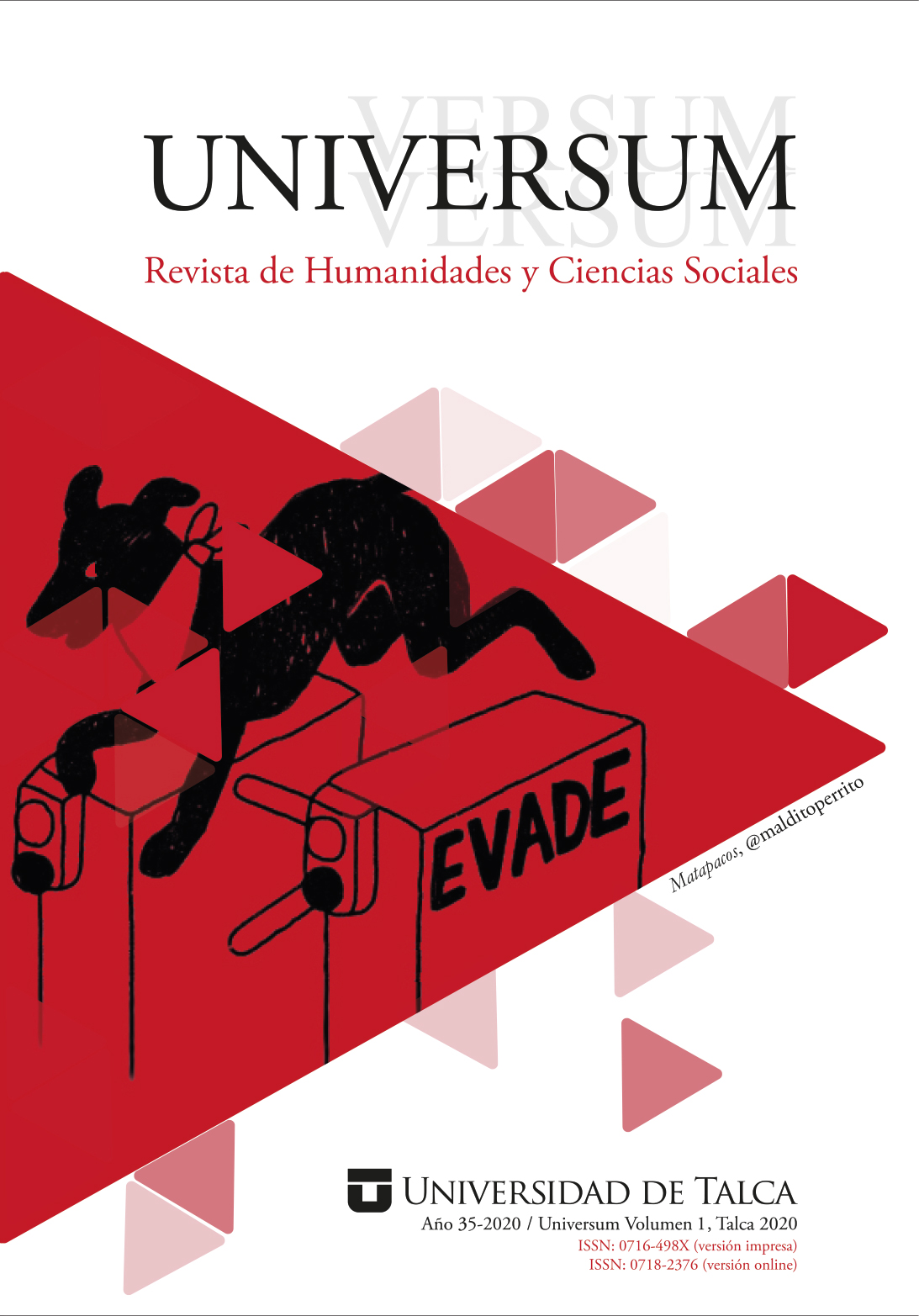Abstract
The artistic installation El mar del dolor by the Chilean poet Raúl Zurita establishes a controversy with the treatment given to migrants in the media, particularly with the photograph of the dead Syrian boy on the beach, taken image by Turkish reporter Nilüfer Demir in 2015 year. Zurita responds to this picture by creating a piece of humanity —a concept of Georges Didi Huberman— for the migrants who were on that boat that was shipwrecked. In their piece of humanity, the subjects invisible to photography, whose names have been forgotten or crossed out, recover their names; and, the victim no longer has a strange, unique or exotic experience, as in the photograph, but its occurrence is linked to other experiences of pain, mainly those of the author of the artistic text. In opposition to neat photography, which shows the sufferer isolated from his context, the Zuritian humanity plot makes the different forces of the conflict appear, generating spaces that are not just a set. Also, while the overexposing photograph enjoys the pose, the plot returns the movement and life to those who had been captured and kidnapped by the lens. With this, Zurita polemizes with overrepresentation, a photography as a spectacle where the spectator is a specter of what happens; and with the under-representation of those who have no right to image. The poet manages to remove the visitor from the installation of his status as a spectator and introduce it to the experience of the migrant shipwreck
References
Arendt, Hannah. La condición humana. Barcelona: Paidós, 2009.
Barthes, Roland. Cámara lúcida. Nota sobre la fotografía. Barcelona: Paidós, 1989.
Benjamin, Walter. “Sobre el concepto de la historia”. Walter Benjamin. La dialéctica en suspenso. Fragmento sobre la historia. Trad. Pablo Oyarzún. Santiago: Lom, 2009: 37-85.
Cánovas, Rodrigo. Linh, Zurita, Ictus, Radrigán: Literatura chilena y experiencia autoritaria. Santiago: Flacso. Ediciones Ainavillo, 1986.
Corominas, Joan. Breve diccionario etimológico de la lengua castellana. Madrid: Gredos, 1987.
Defoe, Daniel. Robinson Crusoe. Trad. Julio Cortázar. Buenos Aires: Ediciones del Sol, 1973.
Didi-Huberman, Georges. Pueblos expuestos, pueblos figurantes. Argentina: Manantial, 2014.
Esparza, Ricardo y Arnaldo Donoso. “Escribir el cielo, escribir el desierto, escribir el acantilado: la escritura material de Raúl Zurita”. Ecozon 2(6): 67-80.
Guerrero, Pedro Pablo. “Raúl Zurita. Nunca he actuado con calculo”. El Mercurio, Artes y Letras, 25, septiembre, 2016: E6.
Hernández, Pablo. Imagen-palabra-lugar, sujeción y mirada en las artes visuales centroamericanas. Frankurt: Iberoamericana-Vervuert, 2012.
Kay, Ronald. Del espacio de acá. Señales para una mirada americana. Santiago: Metales pesados, 2005.
Larrañaga, Josu. Instalaciones. Los Angeles, EE.UU: Editorial Nerea. Colaboración de Getty Grant Program, 2001.
Lister, Martin. La imagen fotográfica en la cultura digital. Buenos Aires: Paidós, 1997.
Marchán, Simón. Del arte objetual al arte del concepto (1960-1974). Madrid: Akal, 1988
Sampson, Tony D. Virality. Contagion Theory in the Age of Networks. University of Minnesota Press, 2012.
Weiwei, Ai. “Todas las luchas políticas son una búsqueda de libertad”. La Panera 92. Santiago, abril, 2018: 9-11.
Zurita, Raúl. La vida nueva. Santiago: Editorial Universitaria, 1993.
_. El mar del dolor. Video de la performance art realizada en Kochi, dic 2016 a marzo del 2017.
_. Verás. Edición, selección y prólogo de Héctor Hernández Montecinos. Santiago: Biblioteca Nacional de Chile, 2016.

This work is licensed under a Creative Commons Attribution-NonCommercial 4.0 International License.
Copyright (c) 2020 Universum (Talca. En línea)


